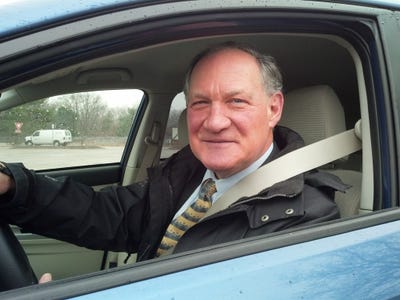Motorists Want Infotainment
Detroit In this time of constant connectivity, what happens outside the car should also happen inside the car. So says Brian Droessler, Continental AG's director-North American customer centers, during a Ward's Auto Interiors Show panel discussion. Modern vehicles are being loaded with various electronic devices as well as integration systems that accommodate MP3 players, Bluetooth cell phones and

Detroit — In this time of constant connectivity, “what happens outside the car should also happen inside the car.”
So says Brian Droessler, Continental AG's director-North American customer centers, during a Ward's Auto Interiors Show “infotainment” panel discussion.
Modern vehicles are being loaded with various electronic devices as well as integration systems that accommodate MP3 players, Bluetooth cell phones and other mobile devices brought into the car.
“We're in the middle of an era of device accommodation,” Droessler says, referring to systems such as voice-activated Sync, which Ford Motor Co. offers on many of its vehicles.
To succeed in the long run, those integrators need to accommodate future upgrades as the lifecycle of electronic devices is shorter than vehicle ownership, he says.
In developing the Sync platform with Microsoft Corp., Ford made sure the infrastructure could handle such software upgrades, says James Buczkowski, the auto maker's director-electronics and electrical systems engineering.
Modern society has changed in significant ways. That has led to a growing number of information and entertainment systems installed in cars to satisfy customer demands.
“We're a different society,” Buczkowski says. “‘The Information Age’ is an overused term, but information is in our lives all the time. It has changed the way we live. We're so dependent on devices, some people say they'd rather lose their keys or wallets than their cell phones.”
Young motorists grew up with the Internet and media players that download music. “It's quite a different generation,” he says. “They want to be able to do in their cars what they do in their homes. The car is a second home on wheels.”
In-car Internet access soon will be commonplace, Droessler says. “The Internet in cars is coming. People want it.”
The trick is to do it “the right way,” he says referring to distracted-driver safety issues. It's important for suppliers and auto makers “to step back and figure out what consumers want.”
But there is a limit. One conference participant wondered if personalizing the driving experience might extend to a motorist being able to blank out the speedometer reading, much like deleting a desk-top icon on a computer.
That isn't going to happen, Buczkowski says. “We're not going to open up the car for any integration. Ford is very conscious of safety.”
Droessler predicts in-vehicle digital entertainment will continue to grow to meet customer expectations. System developers must grapple with issues such as safety risks and vehicle interiors accommodating more and more equipment, he says. (See story below.)
Read more about:
2008About the Author
You May Also Like

